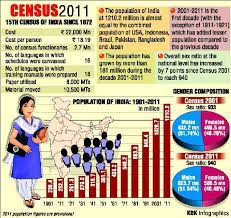
Significance of Caste Census
Significance of Caste Census
Important for Prelims exams:
Rohini Commission, Mandal Commission, Census, Socio-Economic-Caste Census
Important for Mains exams:
GS-3: Importance, challenges of caste census, recommendations of Rohini Commission, caste survey of Bihar government.
October 15, 2023
Context:
- After the Justice G Rohini-led Commission submitted a draft proposal recommending sub-categorization of reservation for Other Backward Classes (OBC), there is a growing demand for caste census along with the general census in the country from the year 2022.
- Recently, after the Supreme Court refused to ban the caste census conducted in Bihar, opposition parties have intensified politics on this issue. Opposition parties demand that caste census should be conducted in the entire country. The Supreme Court has postponed to January 2024 the hearing of petitions challenging the constitutionality of the caste-based survey conducted by the Bihar government.
- Notably, the Court refused to pass any order of stay or status quo restraining the State from undertaking the caste survey. The bench orally said that we cannot stop the state government or any government from taking the decision. Let us know what has been the history of India regarding caste census.
History of Caste Census:
- Census was started in the year 1872 during the British rule in India. Every time the British conducted a census of India till 1931, information related to caste was also recorded. After achieving independence, when India conducted its first census in the year 1951, only people belonging to Scheduled Castes and Scheduled Tribes were classified in the name of caste. The situation changed in the 1980s when several regional political parties emerged whose politics were based on caste. These parties started a campaign to challenge the dominance of the so-called upper castes in politics as well as to provide reservation to the so-called lower castes in government educational institutions and jobs.
- According to the Central Government, in the first census conducted in India in 1931, the total number of castes in the country was 4,147. Whereas after the caste census conducted in 2011, the total number of castes in the country was more than 46 lakhs.
- The Congress-led United Progressive Alliance government decided to conduct the first caste census of independent India in 2010 along with a socio-economic census to determine the level of deprivation. OBC leaders like Lalu Prasad, Mulayam Singh Yadav and Nitish Kumar had supported this decision.
Mandal Commission formed:
- In the year 1979, the Government of India had constituted the Mandal Commission on the issue of giving reservation to socially and educationally backward castes. Mandal Commission recommended giving reservation to OBC category people, but this recommendation could be implemented only in 1990. After this, there were fierce protests by general category students across the country. Since the issue of caste census was linked to reservation, political parties started raising its demand from time to time.
- Finally, in 2010, when a large number of MPs demanded a caste census, the then Congress government had to agree to it. Socio-economic caste census was conducted in 2011, but the caste-related data obtained in this process was never made public. Similarly, caste census was conducted in Karnataka in the year 2015, but the data was never made public.
Recommendation of Rohini Commission:
- About 2,633 castes are included under OBC reservation. States have the flexibility to add castes to the central list based on local deprivation levels determined by local OBC commissions. In February 2021, the Rohini Commission proposed dividing the 27% reservation for castes in the central list into four sub-categories.
- In 2018, the Commission analyzed data on 13,00,00 central jobs and admissions to central higher education institutions under the OBC quota in the last five years. It found that 97% of all jobs and academic seats have gone to only 25% of all classified sub-castes. And 24.95% of these jobs and seats went to only 10 OBC communities. The commission also said that the 983 OBC community, which is one-third of the total, had almost zero representation in admissions to jobs and educational institutions.
Significance of caste census:
- Many types of arguments have been given in favor of and against the caste census.
- The biggest argument given in its favor is that on the basis of the data obtained by conducting such a census, the benefits of the government's welfare schemes can be extended to those sections of the society who need them the most.
- The opposition's argument is that caste census will strengthen unity and people will get a share in democracy.
- One argument is that the benefit of caste census will be that if data is available for welfare schemes then preparations for them can be done in a better way.
- This will especially help in making policies for Scheduled Castes, Scheduled Tribes and Other Backward Classes.
- It is also very important to ensure social justice and population sharing. Caste census is necessary for all states.
Challenges:
- There is a possibility of increase in caste discrimination.
- Socio-economic inequality may increase in the society.
- It will be difficult to define castes.
- Stratification will be promoted in the society.
Conclusion:
- Caste census can prove to be important in promoting social justice and ensuring equitable distribution of resources, but it is also necessary to be conscious of the challenges associated with it.
--------------------------------------
Main Exam Questions
- Mention the importance of caste census and the challenges associated with it.
- Is caste census the need of the hour or a political maneuver. Discuss.